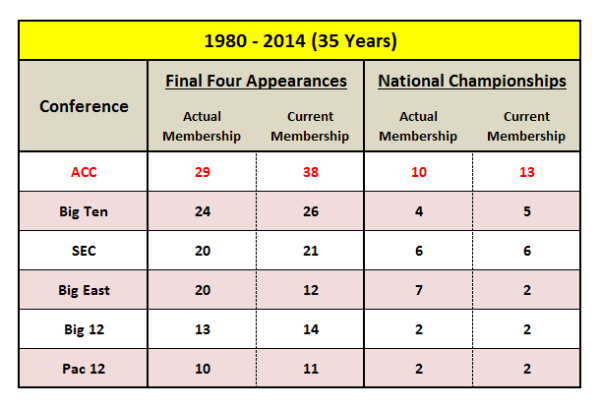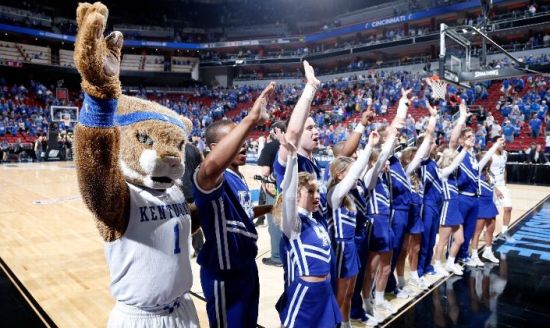ACC Must End Final Four Drought to Claim Best Conference Status
Posted by Brad Jenkins (@bradjenk) on March 25th, 2015With a record-tying five schools in the Sweet Sixteen, the ACC has received a lot of praise this week as this year’s best conference. There’s no doubt that tying the 2009 Big East with the most teams to advance to the second weekend of the NCAA Tournament is quite an impressive feat. But it’s also not totally unexpected either, considering that the league placed five teams among the top four seed-lines of the bracket. The only real surprise is that the ACC’s regular season champion, Virginia, is not among the quintet still playing, replaced instead by #8 seed N.C.State (which knocked off #1 seed Villanova). There are many different metrics that are used to rank leagues: overall average team rankings (RPI, KenPom); head-to-head results between the major conferences; NCAA Performance (teams in the Big Dance, total wins, Sweet Sixteen schools, Final Four teams, Championships); and combinations of them all. And while the ACC has historically outperformed every other conference in most if not all of those categories, the league has slid in what we feel are the most important areas — Final Four appearances and national championships — over the last nine years.
The table above shows how well the ACC has done over the past 35 years in getting to the Final Four and winning the National Championship. We used 1980 as the starting point in our analysis because that was the first truly “open” tournament. Up until 1975, only conference champions were invited to the NCAA Tournament, and for the next five years (1975-79), the maximum number of teams allowed from a single league was limited to two. In addition to results from actual conference membership at the time, just for fun, we also added results from a current league affiliation perspective. For example, in the current membership column, the ACC loses Maryland’s two Final Four appearances but gains the many earned by Syracuse and Louisville as members of the Big East and other leagues. Now let’s look at just how far the ACC has fallen in recent NCAA Tournaments, starting with the first 26 years of the open tournament era.




















































